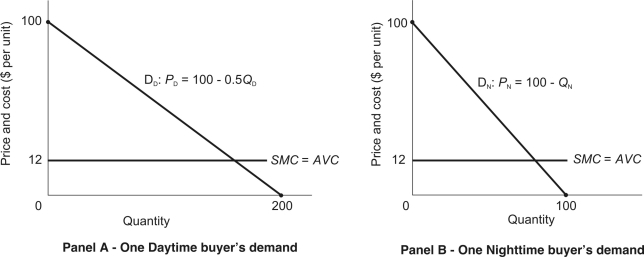A firm sells its product to two groups of buyers: daytime buyers and nighttime buyers.There are 50 daytime buyers,all of whom have identical demands given by DD in the figure below.There are 50 nighttime buyers,all of whom have identical demands given by DN in the figure below.The firm's variable costs are constant (SMC = AVC = $12) and its total fixed cost is $250,000.The marketing director must devise a two-part pricing plan that will maximize the firm's profit.  Now suppose the marketing director wishes to serve both daytime and nighttime buyers,what is the MRf function?
Now suppose the marketing director wishes to serve both daytime and nighttime buyers,what is the MRf function?
Definitions:
Consumer Demand Curve
A graphical representation showing the quantity of a product that consumers are willing and able to purchase at various price levels.
Marginal Utility
The additional satisfaction or utility gained by consuming one more unit of a good or service.
Income Effect
The change in an individual's consumption resulting from a change in their real income, due to price changes or other factors.
Law of Demand
indicates the inverse relationship between the price of a good or service and the quantity demanded, with demand typically decreasing as prices increase, all else being constant.
Q11: The figure below shows the marginal damage
Q13: The empirical specification <span class="ql-formula"
Q14: According to Egan,how would you know whether
Q14: Straker Industries estimated its short-run costs
Q24: A client's reluctance to self-disclose most likely
Q26: Below,the graph on the left shows long-run
Q28: If you as the personal care provider
Q58: Price leadership<br>A)is rather uncommon today.<br>B)is a pricing
Q74: In order to minimize losses in the
Q77: A firm with market power faces